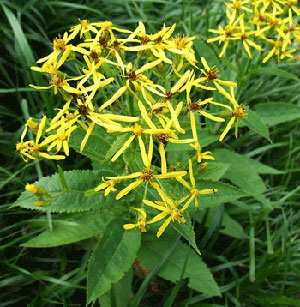 The Mt. Kenya, the second highest mountain in Kenya with its gigantic and glorious appearance is the habitat of common groundsel (senecio vulgaris). This plant abundantly grows in the slopes of the mountain where freezing winds dominate at nights and the soil is covered with a thin layer of ice.
The Mt. Kenya, the second highest mountain in Kenya with its gigantic and glorious appearance is the habitat of common groundsel (senecio vulgaris). This plant abundantly grows in the slopes of the mountain where freezing winds dominate at nights and the soil is covered with a thin layer of ice.
Due to the equatorial climate which is scorchingly hot during the day and very cold at nights not many plants grow in this region. For this reason common groundsel that can survive under a rapidly-covering layer frost at nights has been a matter of research for scientists.
The antifreeze system under the stem of common groundsel
The common groundsel that saves itself from the ice layer covering its tissues at nights can survive under very harsh conditions. To this end, the plant employs a very interesting system reminding an antifreeze system.
The first method the common groundsel employs against cold is a special defense system that it possesses in its leaves. The leaves of common groundsel produce a special substance that protects its tissues from frost. This material enables the thin layer of ice covering the plant to dissolve under the Sun and gives the energy the stem needs. However the harms of frost can not only be eliminated by this material. The researchers who are aware of this fact carried out a detailed research to find out how the plant manages not to freeze at very low temperatures.
The measure taken against the danger of drying
The common groundsel that has a very beautiful appearance employs another very rational method against freezing. Ice starts to dissolve under the effect of sunlight while water in the pores of leaves evaporate. At this point the plant must refill the pores and save the leaves that are about to dry in order to survive. However the plant which uses the water channels in its stem to fill the pores with water faces a serious danger here: with the cooling air the water channels also start to freeze gradually. However contrary to what is expected the plant employs a very interesting method to get rid of the ice covering the water channels. The lowest ring of leaves that surrounds the stem of the plant start to dry at a certain time of the year. However the plant does not shed these leaves but keeps them on its stem. The dry leaves covering the bottom of the stem form a thick armor against severe cold and thus protect the plant. By means of this intelligent method the plant prevents the channels to go dry and thus send the necessary water to its remaining leaves.
The superior attributes in plants are the inspiration from our All Mighty Lord
The way the common groundsel estimates the harm likely to be given by severe weather and the method it uses to produce a material to eliminate it is a behavior that demands consciousness. Nevertheless, it is impossible for a plant to formulate and produce a material in order to remove the likely harms of cold. Furthermore even human beings need state-of-the-art technology and experts in the related field to make such a discovery. This being the case how does a plant can come up with such a formula and form the system within itself that will produce this material? Moreover the plants knows that it is insufficient to take this measure and develops another precaution against the probability of the freezing of water in channels.
All these facts indicate that it is Allah, the Lord of all the worlds, Who grants extremely flawless defense tactics to this plant and makes it grow in the most unfavorable conditions. In one verse our Lord informs us about His beautiful attributes about creation as follows:
He is Allah – the Creator, the Maker, the Giver of Form. To Him belong the Most Beautiful Names. Everything in the heavens and earth glorifies Him. He is the Almighty, the All-Wise. (Surat al-Hashr, 24)


